How to choose the components for a sliding door system?
On this page you will find a few easy steps to selecting all the needed parts for a sliding door system. We will use the 75 series components as an example, but the main principals apply in other series as well. There are of course some exceptions in the series and if you have any questions feel free to contact our sales department or our distributors.
1. TRACK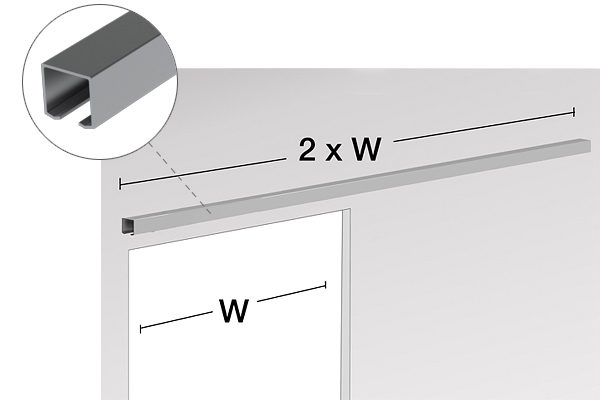
Track length is normally twice the width of the door opening.
Note! Multiple track lines are used when there is not enough space for the doors to open or the doors move side by side. Choose Double brackets to install two track lines side by side.
2. BRACKETS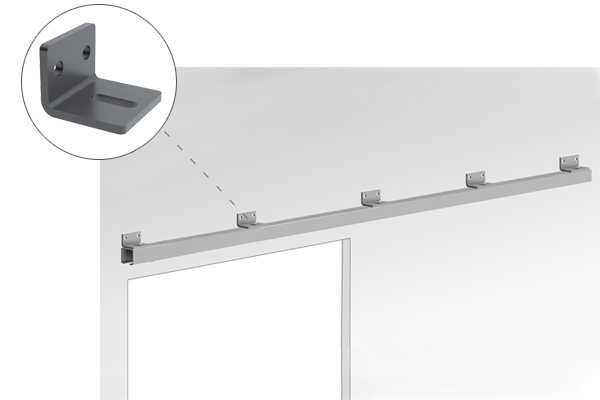
You can choose either wall or soffit brackets. The number of brackets is chosen based on track length. (Make sure to check the bracket interval of the specific bracket).
Note! In light series the track can be fixed directly underneath the door lintel without brackets. Do-It-Yourself fittings set packages already include drilled holes for soffit fixing. If needed you can also join two tracks with track joints or joint brackets. The joining of tracks is generally more common in heavier series.
3. HANGERS AND FIXING PLATES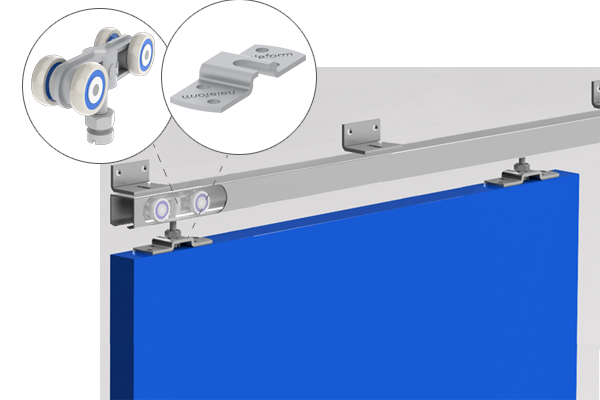
Nylon wheels are recommended for indoor use and Steel wheels for outdoor use. Hangers are installed 2 pcs/door. Fixing plates are used to install hangers to doors. Wood, aluminum and composite doors are hung with top or side fixing plates.
Note! Metal doors don’t usually need fixing plates, since the hangers bolt is usually drilled directly to the frame of the metal door.
4. STOPS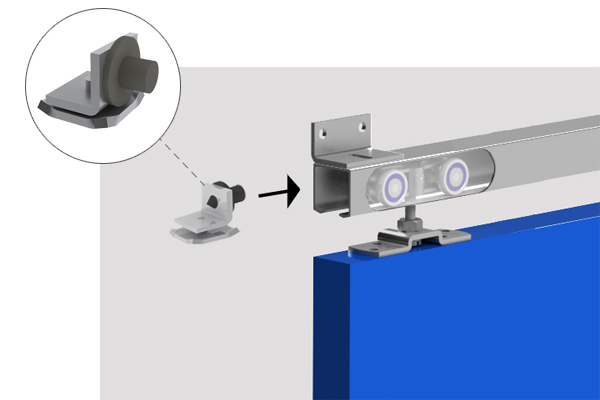
Stops limit the sliding doors movement. A stop inside the track is normally used, which stops the movement by hitting the body of the hanger. In some chases a wall stop is used, which stops the movement by hitting the sliding door.
Note! Bolts should not be used as stops, as they damage the bearing of the hanger.
5. BOTTOM GUIDE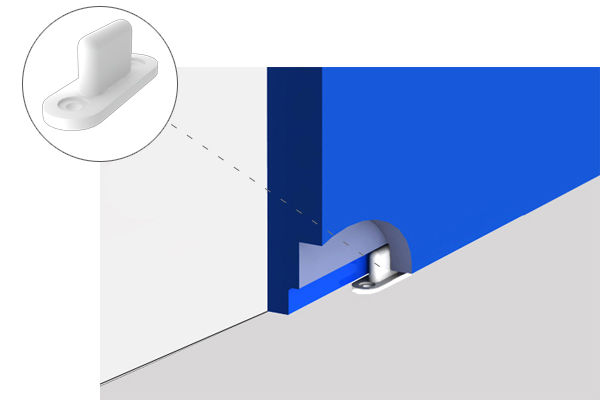
A bottom guide is essential for the correct functionality of the door and it ensures faultless and safe operation of the door as well as prevents the door from swinging. Bottom guides are usually installed on the floor or wall and in some chases even underneath the door leaf. A bottom guide usually moves in the door groove or in the bottom guide channel, which is fixed into the door groove.
6. ACCESSORIES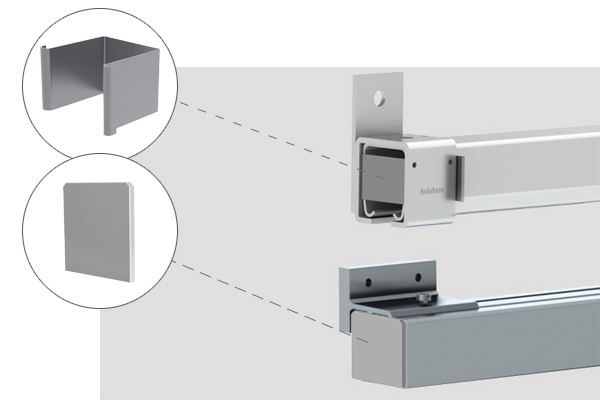
End clips and end caps prevent the tracks lateral movement and finish the tracks stylish design.

Soft Close closes and opens the door smoothly and effortlessly.
Soft Stop gently dampens the stop and keeps the door in the open position.
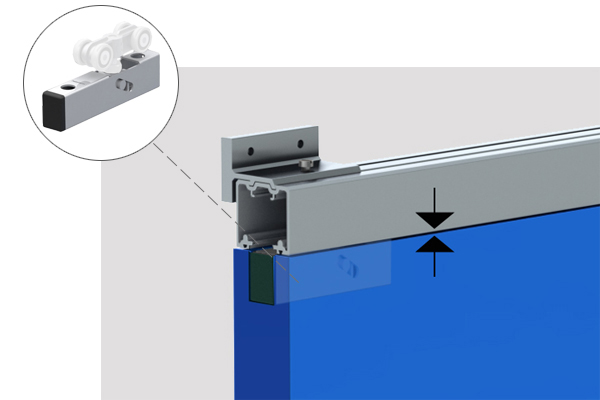
With a Low headroom plate you can adjust the gap between the track and the door.
If you have any questions feel free to contact our sales department or our distributors.